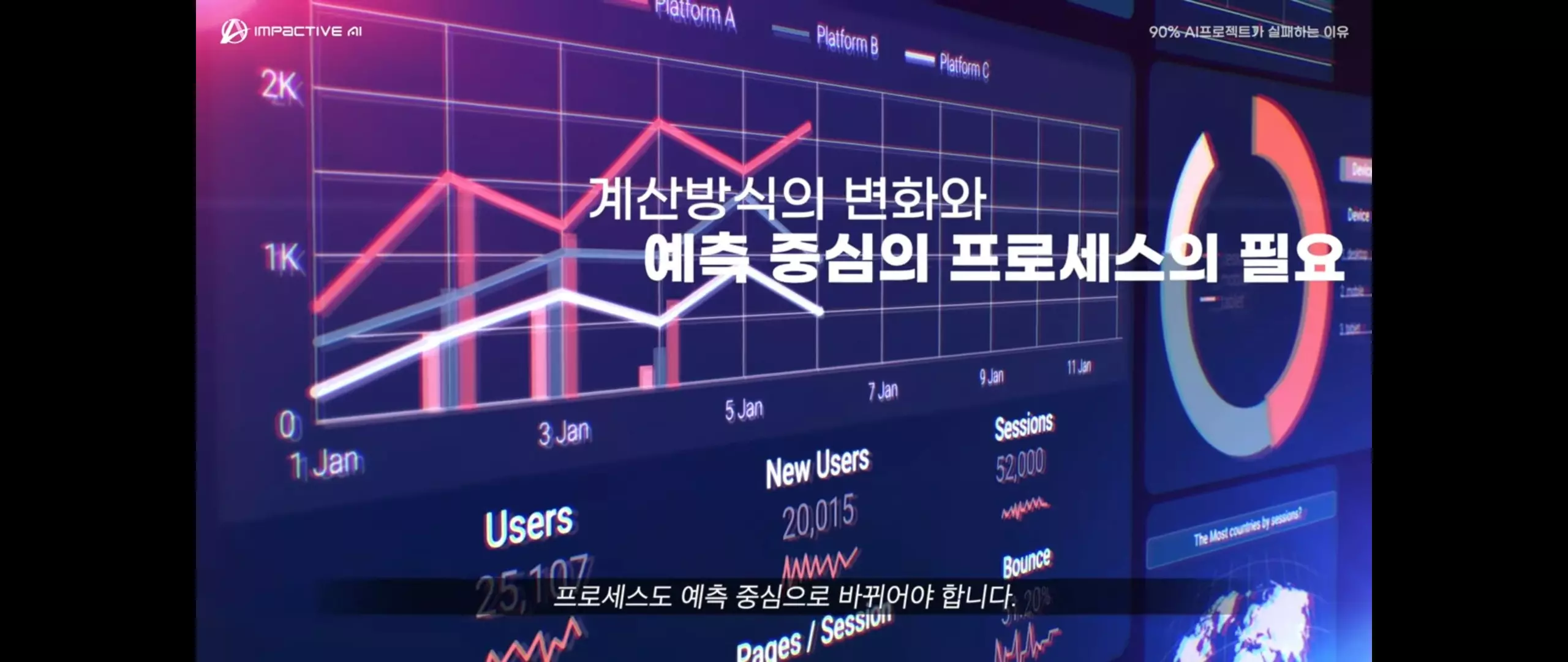How to overcome the practical limitations of ERP systems?

Global supply chain crises, rapidly changing consumer demands, and intensifying market competition. These challenges faced by companies today are no longer easy to solve with a single existing ERP system.
In the past, ERP systems have made great contributions to efficiently managing corporate resources and standardizing operational processes. However, today, we are in an era where we need to analyze a large amount of data that is generated every day and make accurate predictions and quick decisions based on that data.
In particular, finding the optimal balance between overstocking and out-of-stock in inventory management has become a homework for all companies.
Companies are currently struggling because they cannot accurately predict rapid fluctuations in demand. It is also a major challenge to manage complex global supply chains in an integrated manner. In addition, they are burdened with the need to establish differentiated inventory management strategies for each product.
However, it is difficult to respond to these issues in real time and make quick decisions with the existing ERP system.
In this article, we will look at the practical limitations of traditional ERP systems and how AI-based demand forecasting solutions can overcome these limitations and strengthen a company's competitiveness.
In particular, you can see in detail how AI technology is driving innovation in inventory management.
Practical limitations of traditional ERP systems
Inefficient inventory management due to inaccurate demand forecasting

According to Gartner's 2023 Supply Chain Analytics Report, the demand forecast accuracy of companies using traditional ERP systems is only 65% on average. This low forecast accuracy stems from the structural limitations of ERP systems.
Existing ERP uses a demand forecasting method based on simple statistical analysis of past sales data, making it difficult to make accurate predictions in rapidly changing market environments.
In particular, the accuracy of predictions drops significantly in situations where it is difficult to make decisions based on past data, such as new product launches, promotions, and seasonal product management.
This causes inefficiencies for manufacturers, as they experience both overstock and stock-out issues within the same product line.
Moreover, in the modern business environment, where the complexity of global supply chains is increasing and consumer behavior is rapidly changing, simple statistical-based forecasting methods are becoming a major factor in hindering a company's competitiveness.
This forecasting inaccuracy does not simply lead to inefficiency in inventory management, but also causes chain problems across the entire business, such as production planning disruptions, increased logistics costs, and reduced customer service levels.
Limitations of data-based decision-making
According to the latest research by IDC, the biggest obstacle to companies' digital transformation is the limited data integration capabilities of existing ERP systems.
Traditional ERP systems are optimized to process transactional and operational data within the company, and thus have structural limitations in integrating and analyzing external data, which is essential for modern business.

External variables such as weather, market trends, consumer behavior patterns, and competitor activity are important factors that directly affect a company's supply and demand, but existing ERP systems cannot integrate and analyze such data in real time.
In particular, as the importance of unstructured data such as social media data, online search trends, and IoT sensor data increases, the limitations of ERP systems optimized for processing structured data are becoming more apparent.
These data integration limitations hinder a company's ability to quickly detect and respond to market changes, which in turn leads to the loss of business opportunities.
Business responsiveness is reduced due to system rigidity

According to Gartner's analysis, the average duration of ERP system customization projects is more than six months, which is a major reason why it is difficult for companies to respond to the market quickly.
Traditional ERP systems are designed based on standardized business processes, so it takes a lot of time and money every time a company needs to change its business requirements or processes in response to market changes.
This system rigidity is a serious obstacle, especially when implementing strategic changes such as implementing an omni-channel strategy, introducing new business models, and diversifying supply chains.
Moreover, most ERP systems have complex code structures and strong dependencies between modules, which places the burden of closely examining and testing the impact of even small changes on the entire system.
This is a major weakness in the modern business environment, where companies must seize market opportunities and respond quickly, and it is holding back digital transformation.
Innovative value of AI-based demand forecasting solutions
Accuracy of forecasting through data integration

Deepflow's self-developed AI-based demand forecasting solution overcomes the limitations of existing ERP systems by integrating and analyzing various external data in real time.
According to Gartner's latest report, the introduction of an AI-based demand forecasting system has improved the forecast accuracy by an average of more than 30%.
In particular, Deepflow can respond more sensitively to market changes by reflecting various external factors such as weather, market trends, and consumer patterns in real time.

Based on the patterns learned by AI, it can also accurately predict the launch of new products and the effectiveness of promotions, ensuring high accuracy even in areas where predictions were previously difficult.
In addition, by applying a differentiated prediction model that takes into account the characteristics and importance of each product, it is now possible to manage inventory optimally for each product group. This sophisticated prediction not only reduces costs through inventory optimization, but also improves customer service levels and increases sales.
Building an Automated Decision Support System
According to a McKinsey study, the introduction of an AI-based decision support system is estimated to improve a company's operational efficiency by an average of 25%. Real-time decision support, which was not possible with existing ERP systems, can be achieved through Deepflow's AI engine.

Deepflow's system automatically suggests the optimal order timing and quantity based on the demand forecast results, and provides a preemptive warning when the risk of inventory shortage or excess is detected. This not only greatly reduces the manual workload of the person in charge, but also minimizes the possibility of human error.
It also clearly presents the basis for the decisions proposed by the system, providing the insight users need to make the final decision. Changes to business rules or the addition of new constraints are immediately reflected in the AI model, enabling it to support decision-making that is always in line with the latest business conditions.
Ensure flexible system scalability

Deepflow's cloud-based architecture provides scalability that can flexibly respond to the growth and changes of a company.
The modularized system structure allows you to selectively introduce only the functions you need, and you can quickly add or modify functions as business requirements change.
Integration of new data sources or updates to analysis models can also be done in real time without system interruption.
In particular, it can respond quickly to strategic changes such as omnichannel expansion or entry into new markets, effectively supporting the growth of companies. This flexibility becomes a core competitive advantage that enables companies to quickly capture and take advantage of market opportunities.
Conclusion
Strategic choice to strengthen corporate competitiveness
The latest report by global market research firm Forrester predicts that AI-based demand forecasting solutions will be the key to corporate competitiveness over the next five years. This is a problem that is directly linked to the survival of companies, going beyond the mere introduction of technology.
In order to overcome the limitations of traditional ERP systems and respond quickly to market changes, it is essential to switch to AI-based solutions.
In particular, in the current situation where the uncertainty of the global supply chain is increasing and consumer behavior is changing rapidly, accurate demand forecasting and efficient inventory management have become more important than ever.

Deepflow is not just a system replacement, but a strategic partner for companies' digital transformation, and we want to grow together with companies. Through real-time data analysis, sophisticated predictive models, and automated decision support, we will help companies improve operational efficiency and create new business opportunities.
The first step to securing future competitiveness begins with recognizing current limitations and moving towards innovation.
The beginning of sustainable digital transformation
The current business environment no longer allows decision-making based solely on past experience and intuition. Data-based scientific analysis and prediction have become essential for the sustainable growth of companies.
Deepflow responds to these demands of the times and helps companies maximize the value of their data and connect it to real business results.

Deepflow will establish and implement a roadmap for the successful digital transformation of its clients so that the introduction of AI technology will lead to the enhancement of the company's intrinsic competitiveness, rather than simply following trends.
In the modern business environment where uncertainty has become the norm, Deepflow can provide a solid technological foundation that allows companies to accurately predict the future and respond effectively.
Companies are now at a critical crossroads. Will they passively respond to market changes and maintain the status quo, or proactively prepare for the future with AI technology? With Deepflow, your company's digital transformation will no longer be a distant future story, but a reality.


.svg)
%202.svg)
.svg)


.svg)















